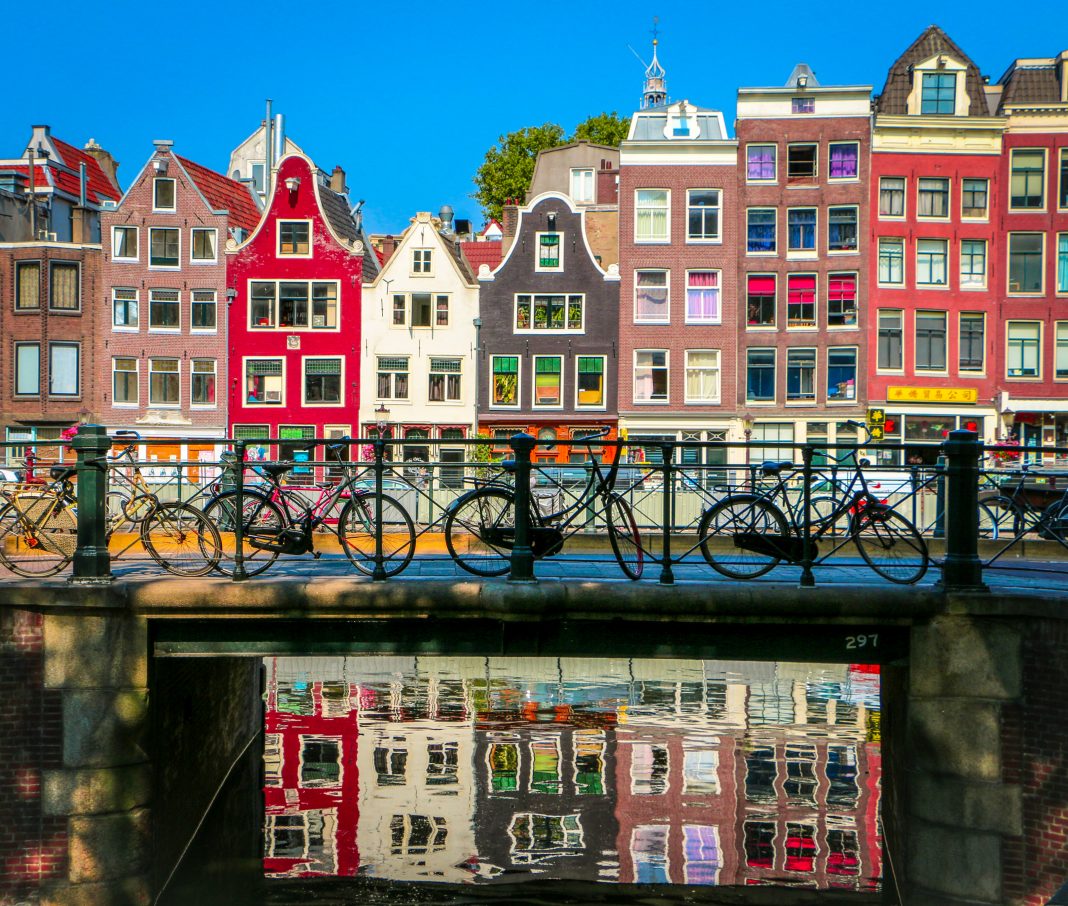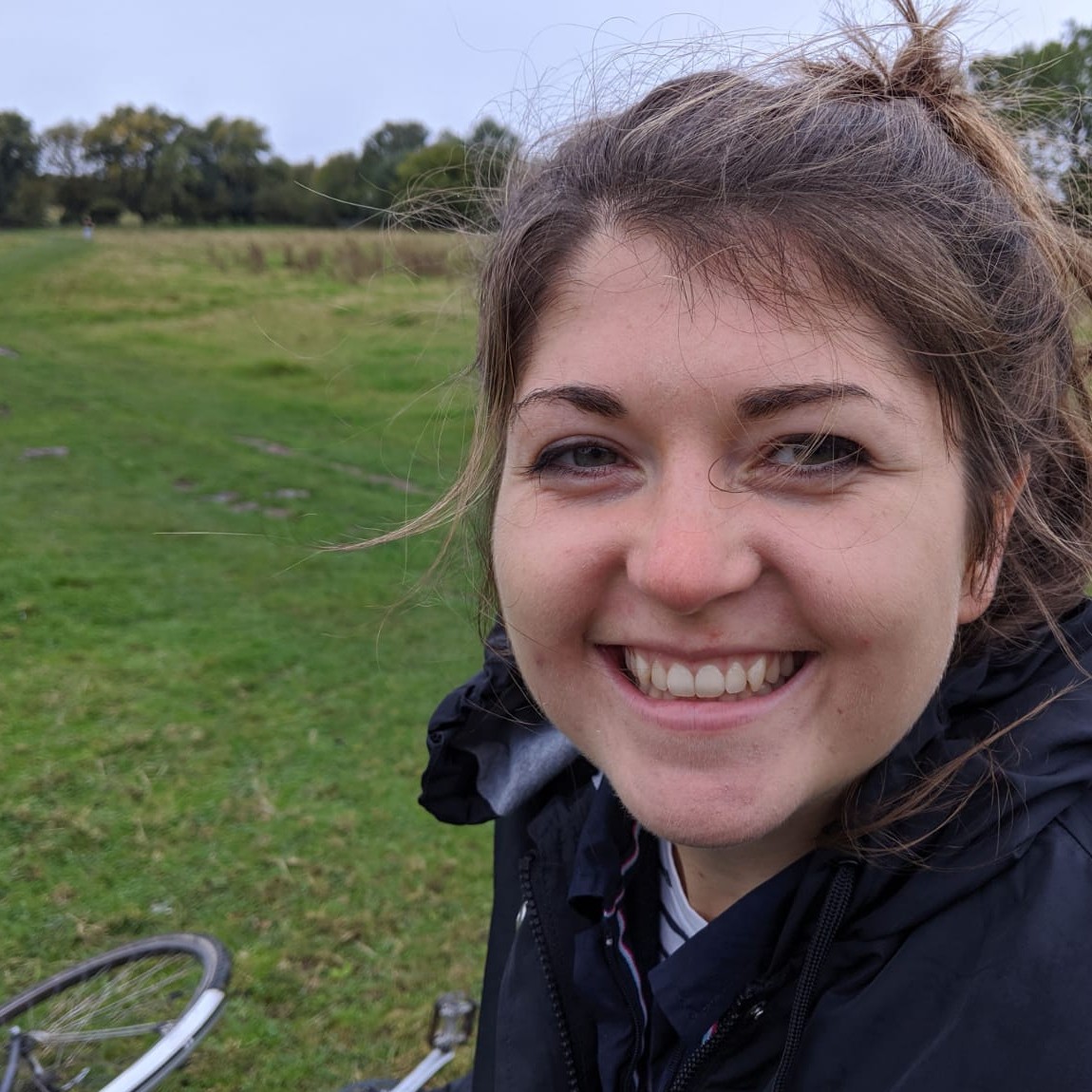Cycling seems like second nature in Amsterdam, but after speaking with Marjolein de Lange, co-author of the book ‘Bike City Amsterdam’, we discovered that this hasn’t always been the case. Filled with fierce activism, from white bicycle archaists to angered mothers, this is the story of how Amsterdam fought to become the world’s cycling capital.
Amsterdam’s Tough Choices: Shall We Fill in the Canals for Cars?
Amsterdam, along with Copenhagen, have reached the lofty heights of being the best cities to cycle around in the world. But the journey to this point was no easy ride – it was hard and ongoing climb. “It takes courage to choose cycling” says Marjolein, an author and activist who witnessed Amsterdam’s courage first-hand.
The city’s cycling story kicks off in the 1920s. “Like many other cities, cycling was becoming really popular,” says Marjolein. “There was an influx of cheap German bikes because of the economic crisis. Cycling was faster than walking, cheaper than a car or horse – but it wasn’t a poor man’s vehicle.”
With its flat landscape, moderate climate and compact design, Amsterdam was an ideal cycling city. Even the city planners knew this: Amsterdam’s 1935 extension plan was designed so that new neighbourhoods would be built within 30 minutes bicycle distance to the centre.
But this started to change with the rise of car ownership. “Between 1950 and 1970s, Amsterdam was in a dilemma,” says Marjolein. Due to its narrow streets and historic design, it quickly became apparent that Amsterdam would need major reconstruction if it was to host the incoming cars. “There was lots of discussion: are we going to widen streets, break down houses and fill in canals to make more space for cars?” says Marjolein.

Two key moments brought the decision to light. Since the increasing traffic meant emergency vehicles were struggling to get through Amsterdam, the Police Commission released a report in 1954 outlining which parts of the city would need to be destroyed to facilitate the traffic. “There was outrange in the newspapers and many people were angry about it,” says Marjolein, “but it started the discussion; if you choose more space for the car, then what’s the consequence?”
Similarly, the city faced the decision of whether to rebuild parts of Amsterdam after the implementation of the metro line (Nieuwmarkt) or replace it with a wide road into the city. Passed by only one vote in 1971, the councillors decided to restore the original architecture – but it was close call.
Faced with the prospect of losing Amsterdam to a world of engines and tarmac, Amsterdam’s citizens were spurred into action. Joining forces from all corners of the city, a bottom-up movement for bicycles began.
Bicycle Activism: Playing on the Streets Shouldn’t Be a Death Penalty
“The 1960s and 70s was when bicycle demonstrations were at its highest” says Marjolein, “There was a coalition of people wanting to safeguard the city: neighbourhood groups, environmentalists, the cyclists union, road safety organisations …. it was an evolving movement.”
One of the most memorable campaign groups was ‘Stop de Kindermoord’ (stop the child murder), a movement led by Dutch mothers in response to the tragic number of road deaths. In 1971 alone, 3,300 people were killed by traffic, more than 400 of which had been children.
“I had young children and I noticed the accidents. It was clear that going to school was a huge risk for children,” says Maartje van Putten, former president of Stop de Kindermoord in the Dutch documentary, Together We Cycle. “The street was taken from pedestrians and playing children by the traffic.”
To take back the streets, Stop the Kindermoord campaigners used an array of creative tactics, including placing tables in the streets to host huge dinner parties, emotive posters and releasing a song called ‘Playing on the streets: a death penalty’ which they presented to the then Prime Minister, Joop den Uyl, and his wife.
Around the same time, Fietsersbond (the Cyclists Union) gained over 30,000 members nationally and campaigned for change. Serious about finding practical solutions, the Fietsersbond Amsterdam produced a comprehensive report of 300 bottlenecks in the city and detailed how to address them from a cyclists’ perspective. Alongside this precision, other events included large cycling demonstrations and painting lanes on roads illegally at night.
“First we would be arrested by the police, of course, but then the whole thing would be in the newspapers and municipal politicians would eventually listen,” Tom Godefrooij, a Cyclists’ Union member told the Guardian. “We had a great fighting spirit and we knew how to voice our ideas.”
Another iconic movement was the ‘White Bicycle Plan’ of the controversial 1960s group, Provo, which involved leaving 50 white painted bicycles on the streets for public use, evoking a reaction for the police in order to promote a public bicycle sharing scheme.
What is striking about Amsterdam’s bicycle activism is the range of actors and interests, all pursuing a converging goal through differing tactics. Add into the mix the OPEC oil crisis, which led the Dutch government to initiate ‘car-free’ Sundays during the 1970s to save petrol, and there was a brimming sense of bicycle fervour.
This pressure bubbling from the cycling demonstrations started to spill over into the political arena. “1978 was a pivotal point,” says Marjolein, “the local elections had become about cycling policy, and the political parties that were in favour of cycling policy and changing mobility policy won.”
This allowed the elected official for transport, Michael van der Vlis, to push for bicycle-friendly streets in Amsterdam. Working in collaboration with the Cyclists Union, the city spent the next 30 years pursuing a cycling vision.
Amsterdam Today: From Passion to Patience
“It took time, patience and persistence,” says Marjolein. “Rebuilding a city cannot be done overnight. Nearly every street has to be good for cycling, so it’s a long-term plan.”
She explains how each redesigned street had to be fought for to overcome opposition, car parking spaces had to be tackled and driving had to be disincentivised. An important policy tool was the Bicycle Main Network, which meant that newly renovated streets had to meet a cycling standard.
Campaigners had to stay alert to ensure cycle friendly measures persisted. During the turn of the 21st century, major campaigns were held over the reinstatement of the famous cycling passage-way under the iconic Rijksmuseum.
Similarly, advocates challenged the law allowing small mopeds to drive on cycle paths. “People were angry again about safety,” says Marjolein. “It took 10 years of demonstrating and talking to politicians at a national level to change it.” Creating a cycling city, therefore, was not a one-off push but a continuous effort.

Today, Amsterdam faces new dilemmas. The popularity of cycling has resulted in bicycle congestion, where many of 1.8m wide cycle paths are too narrow to hold everyone. “The discussion now is how can you make more space for cyclists without making the space for pedestrians smaller?” Marjolein states.
With integrated cycling between traffic and cars becoming increasing popular, through traffic calmed ‘bicycle streets’, ensuring that traffic volumes are low enough to accommodate vulnerable cyclists who prefer a separated bike lane is a challenge. Providing sufficient bicycle parking is another issue, along with connecting new housing developments with bicycle routes and bicycle bridges into the city. As Amsterdam is divided into district with different elected alderman, achieving consistency of bicycle measures adds a further layer of complexity.

In just a few decades, Amsterdam swung from facing the challenge of car congestion, to now facing its own bicycle congestion. Whilst most cities still struggle with the same transport challenges of the 1970s era of automobiles, Amsterdam is unique in the world as a city pioneering an alternative vision of urban mobility.
As Marjolein said, “it takes courage to choose cycling”. From the councillors who narrowly voted against the Nieuwmarkt road, to the mothers who put their grieve into action, to the cyclist unionists who studied every bottleneck, Amsterdam’s defiance against a world of automobiles has left it with canals rather than cars.


